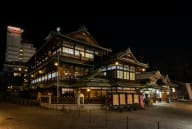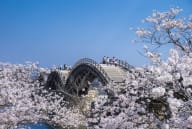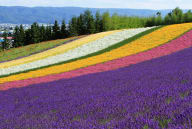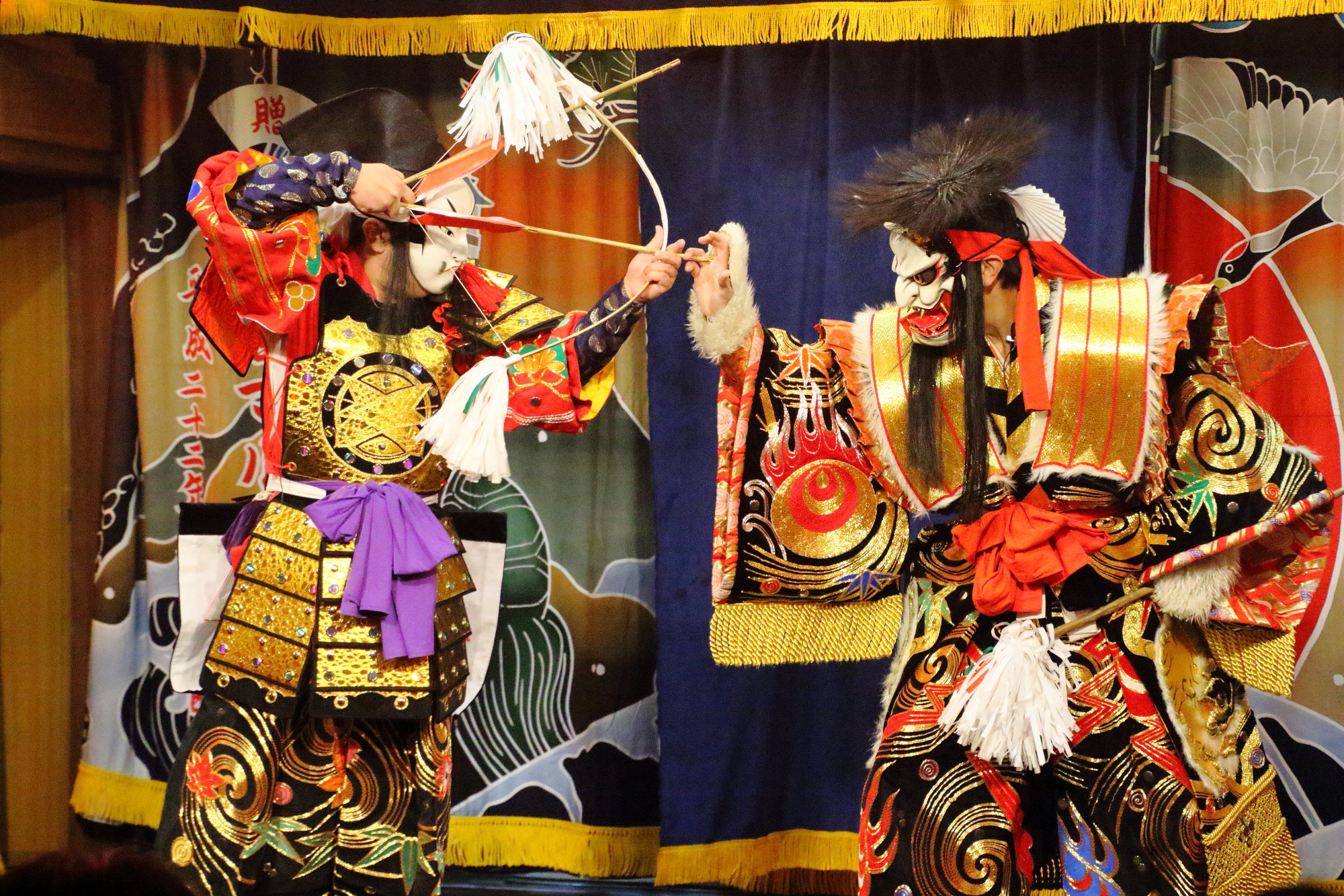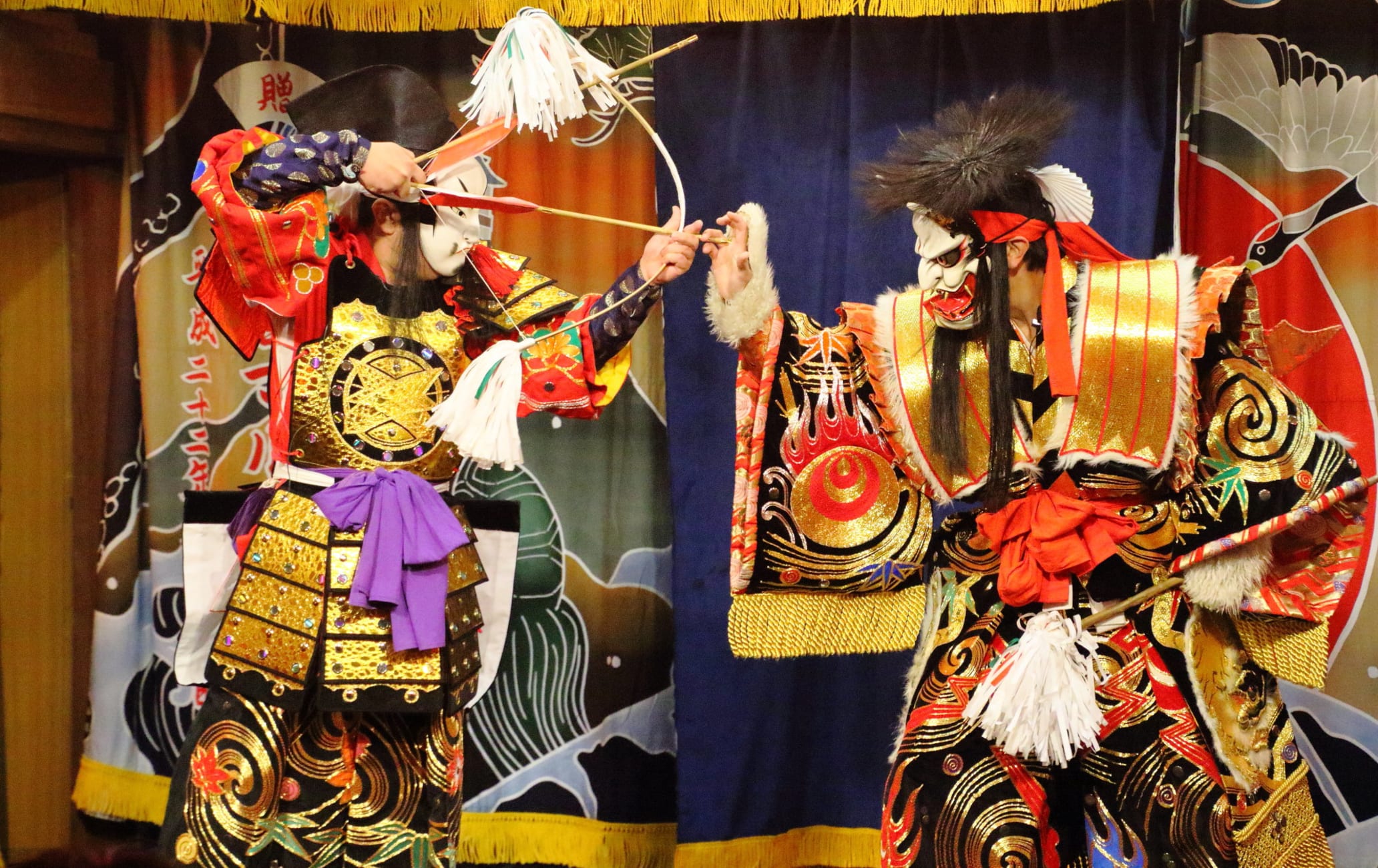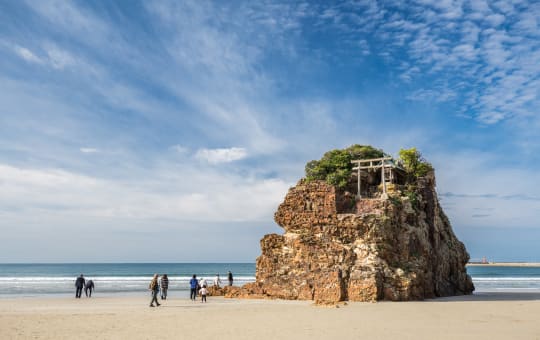L'Iwami Kagura : une approche unique de l'art du spectacle traditionnel
Rapide, exaltant, coloré et dynamique, l'Iwami Kagura est un genre inoubliable d'art du spectacle traditionnel masqué comme vous n'en avez jamais vu auparavant. Cette forme artistique fait vibrer la population locale depuis des décennies et est maintenant régulièrement présentée sous la forme de spectacles au célèbre festival de Gion à Kyoto.
À ne pas manquer
- Les démons terrifiants et les dieux frénétiques
- Le serpent géant à huit têtes, ou Orochi
- Les incroyables masques et costumes
Comment s'y rendre
L'Iwami Kagura est pratiqué toute l'année dans la région d'Iwami, dans la préfecture de Shimane .
L'avion est le moyen de transport le plus simple pour rejoindre la préfecture de Shimane depuis Tokyo. Des vols directs relient l'aéroport de Haneda aux aéroports d'Izumo et de Hagi-Iwami. Depuis l'aéroport d'Izumo, prenez la ligne JR Sanin ou rendez-vous en voiture dans la partie ouest de la préfecture de Shimane.
Depuis Osaka, il existe également des vols directs vers l'aéroport d'Izumo. Si vous prenez le shinkansen, partez de la gare de Shin-Osaka pour la gare de Hiroshima puis prenez l'Isaribi Highway Bus jusqu'à la gare de Hamada.
Mythe et histoire prennent vie
Les histoires racontées dans les danses kagura sont pour la plupart tirées de livres anciens datant des alentours du VIIIe siècle, ou des légendes et histoires de monstres rendues célèbres dans le théâtre nô.
Les histoires sont faciles à suivre car elles sont souvent composées de héros et de vauriens, de dieux et de démons, de bons et de méchants. Souvent, ces danses mettent en scène d'intenses combats de sabre chorégraphiés. Cependant, le spectacle ne se résume pas qu'à l'action et au drame, car il est entrecoupé d'intermèdes comiques avec des danses s'approchant du pantomime. Ces intermèdes ne manqueront pas de déclencher les rires et les applaudissements des spectateurs.
La plus spectaculaire et unique de toutes les danses est celle qui est habituellement exécutée lors du final, appelée Yamata no Orochi, dans laquelle le héros gagne la main de la princesse en combattant huit serpents de quinze mètres de long aux yeux flamboyants et aux mâchoires ouvertes desquelles jaillissent des étincelles. Pendant la bataille, qui devient de plus en plus frénétique à mesure qu'elle se développe, les huit serpents exécutent des figures étonnantes.
Une musique et des costumes innovants
L'Iwami Kagura est un art populaire. Mais contrairement à de nombreux arts japonais et à la kagura d'autres régions, elle n'est pas restée figée dans les formes du passé. Elle a continué à se développer tout en restant fidèle à ses racines.
Les tambours entêtants et les flûtes plaintives jouent des rythmes beaucoup plus rapides dans l'Iwami Kagura que dans tout autre type de kagura. Les machines à fumée, les micros sans fil et les feux d'artifice ne sont que quelques-unes des autres innovations que les groupes locaux utilisent pour rendre leurs spectacles plus exaltants.
Les magnifiques costumes, dont certains valent jusqu'à 10 000 dollars, font davantage penser au kabuki que les costumes de kagura classiques et présentent des motifs tridimensionnels finement brodés réalisés à l'aide de kilomètres de fil d'or et de minuscules miroirs. Intelligemment conçus pour permettre des transformations instantanées, les costumes d'Iwami Kagura misent sur l'effet de surprise.
Les masques sont une autre innovation propre à l'Iwami. L'Iwami Kagura utilise des masques spéciaux au lieu des masques classiques sculptés dans le bois. Les fabricants locaux ont tenté d'utiliser le papier sekishu washi, un papier exceptionnellement solide produit localement, et ont mis au point un procédé qui permet d'avoir des masques plus légers pour le danseur et d'y ajouter des détails les rendant beaucoup plus expressifs.
Les masques, étonnamment abordables, décorent les entrées de nombreuses maisons et entreprises pour éloigner les mauvais esprits. Ils constituent aussi des souvenirs uniques, prisés des visiteurs.
Où, quand et comment voir des spectacles d'Iwami Kagura
Avec plus de 130 groupes de kagura répartis dans la région peu peuplée d'Iwami, les occasions de voir ce spectacle étonnant ne manquent pas. Traditionnellement, la kagura est exécutée en guise d'offrande et de divertissement pour les divinités locales. Heureusement, ce que les divinités apprécient et ce que nous, simples mortels, apprécions s'avère être remarquablement similaire.
Le meilleur endroit, et le plus authentique, pour voir des spectacles d'Iwami Kagura est un festival qui se tient habituellement en octobre ou en novembre dans le sanctuaire local, après la récolte du riz. Cette fête, qui se poursuit toute la nuit jusqu'à minuit ou jusqu'à l'aube, est la façon la plus intime et la plus mémorable de vivre cette expérience traditionnelle.
Si vous êtes dans la région à d'autres moments, sachez que des spectacles d'Iwami Kagura ont désormais lieu lors des festivals d'été, des festivals de fleurs de cerisier, des festivals de danse Obon ainsi que d'autres événements et rassemblements tout au long de l'année.
Beaucoup de petites villes thermales de la région, comme Yunotsu ou Arifuku, proposent de courtes représentations, généralement le samedi soir, pour présenter l'Iwami Kagura à leurs hôtes.
La plupart des villes de la région organisent des concours annuels de kagura, durant lesquels plusieurs groupes sont invités à exécuter une danse. La compétition entre les groupes est féroce et le public local, habitué de ces performances, est très critique. Tout est donc mis en oeuvre pour mettre sur pied un spectacle digne de ce nom. Tenus dans des auditoriums et de grandes salles, ces spectacles vous donnent l'occasion de voir une grande variété de danses et de styles différents en un seul endroit.
















